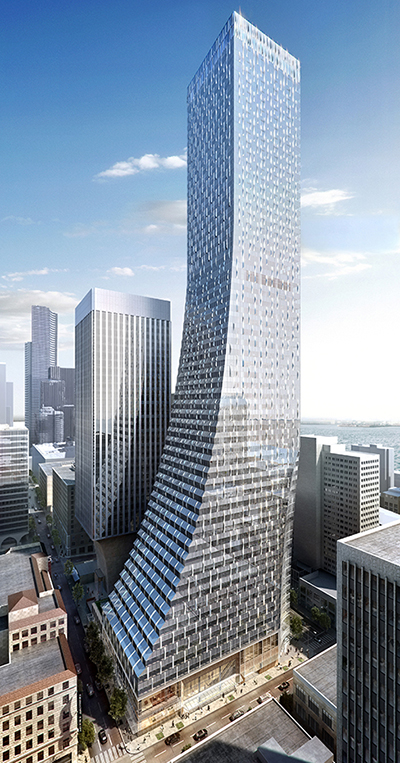 A new steel/concrete composite core wall system has been called “revolutionary” in the design and construction of tall buildings and is now being put into practice in constructing the new 850-ft-tall Rainier Square Tower in Seattle. The system uses two steel plates connected by steel spacing ties with the cavity between the plates filled with high-strength concrete. It provides the potential to shave months off the construction schedule--and reduces costs--compared with a traditional concrete core system. And most importantly, the new system has performed spectacularly in laboratory tests.
A new steel/concrete composite core wall system has been called “revolutionary” in the design and construction of tall buildings and is now being put into practice in constructing the new 850-ft-tall Rainier Square Tower in Seattle. The system uses two steel plates connected by steel spacing ties with the cavity between the plates filled with high-strength concrete. It provides the potential to shave months off the construction schedule--and reduces costs--compared with a traditional concrete core system. And most importantly, the new system has performed spectacularly in laboratory tests.
This tall shear wall system was developed through a series of studies and advancements by Magnusson Klemencic Associates (MKA). “The system is an evolution of many years of our work with composite steel columns, steel plate shear walls, and performance-based seismic design,” Jon Magnusson, senior principal at MKA, explained. “Ron Klemencic has led the development of the system working with MKA engineers, contractors, steel fabricators, university researchers, AISC, and obtained additional financial support from AISC and the Charles Pankow Foundation for the effort.”
This system is the first application of rapid tall composite shear wall construction. There have been other applications of shorter composite walls but not to this scale, and primarily for loads perpendicular to the wall. The tall shear wall effort has included research and lab tests of the system by Prof. Amit H. Varma at Purdue University and Prof. Michel Bruneau with the University at Buffalo. Klemencic added, “Amit and Michel had completed research and development on short wall systems and their new work and contributions on the tall shear walls have been extremely valuable.”
Klemencic, chairman and CEO at MKA, recently received the distinguished engineering alumni award from Purdue University. During a recent presentation at Purdue, Klemencic offered sage advice to students and also showed a video that MKA produced as part of their construction study of this system on the Rainier Square project. The study compared the speed of construction of a traditional concrete core and the new steel-concrete composite core. The result was dramatic. While the concrete core building took 474 working days to top out, the hybrid wall building took only 377 working days.
“The 97 working day difference equals 136 calendar days, which means the owner will benefit from four-and-a-half months lower contractor’s overhead and general conditions costs, four-and-a-half months lower financing costs, and four-and-a-half months of earlier rental income,” Klemencic explained.
You can read more about this composite coupled core wall system in AISC’s recent press release, and it will also be featured in our February issue. A presentation on the system by Klemencic and Varma is also scheduled for the 2018 NASCC: The Steel Conference, April 11-13 in Baltimore. (Registration for the conference opens on Monday, January 15.)